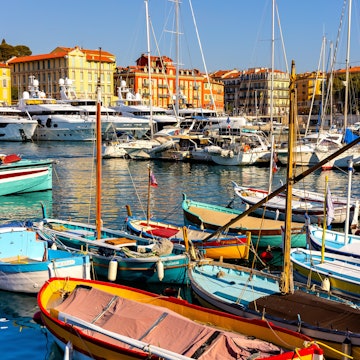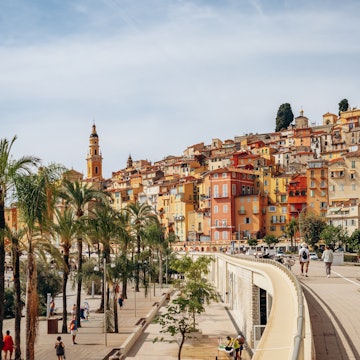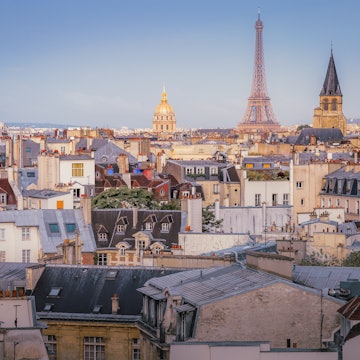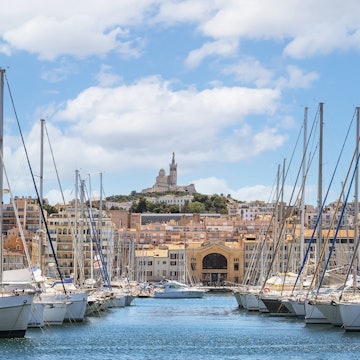

Here's what not to miss in a city famous for its Roman and artistic heritage. Adrienne Pitts/Lonely Planet
The best things to do in Arles span history, food and more, but your first impressions will immediately be marked by the city's Roman legacy. In 49 BCE, Arles' prosperity and political standing rose meteorically when it backed Julius Caesar over his rival Pompey the Great. Caesar plundered Marseille, which supported the wrong side, and Arles eclipsed Marseille as the region's major port.
Soon, its citizens were living the high life, with gladiator fights and chariot races in magnificent open-air theaters that are still surprisingly intact today. The city's 12,000-seat theater and 20,000-seat amphitheater continue to stage major events, including Arles' famous férias, with their controversial bullfights, and street parties.
Arles is also famous for its role in the history of art. The city boasts some very impressive (and gleamingly futuristic) art museums and it hosts a world-renowned photography festival every year. And, of course, some of Vincent van Gogh's most well-known works were conceived here.
You can make Arles your stepping stone into the wet flatlands of the Camargue, roamed by black bulls, white horses and pink flamingos. This is go-slow country – a timeless wetland chequered with silver salt pans and traditional gardians (cowboys). But perhaps the delta's greatest feature is its birdlife – flamingos are the star attraction, but there are countless other species to spot here too.
Whether you’re stopping for a weekend break, or you have the opportunity to stay a while, here are the best things to do in gorgeous, historic Arles.

1. Appreciate a master painter at the Fondation Vincent Van Gogh
Housed in a listed 15th-century manor that was previously used as a bank, this van Gogh–themed art museum and non-profit foundation is a must-see on your visit to Arles (for the architecture as well as the art). While it has no permanent collection, it hosts one to two excellent exhibitions each year – always with a van Gogh theme and always including at least one high-profile van Gogh masterpiece.
Planning tip: Fondation Vincent Van Gogh is open from 10am to 6pm daily. You'll also spy commemorative van Gogh paintings on display around the city.
2. Stand at the Starry Night Over the Rhône viewpoint
You can visit the spot where van Gogh painted one of his most famous works, Starry Night Over the Rhône (1888), which is now hanging in the Musée d'Orsay in Paris. It was painted on the bank of the Rhône in Arles, just a short walk from the “Yellow House” (which is no longer standing due to bombing raids during WWII), where van Gogh was renting rooms at the time. When conditions are right, you can see some of what van Gogh captured in the gloaming light.
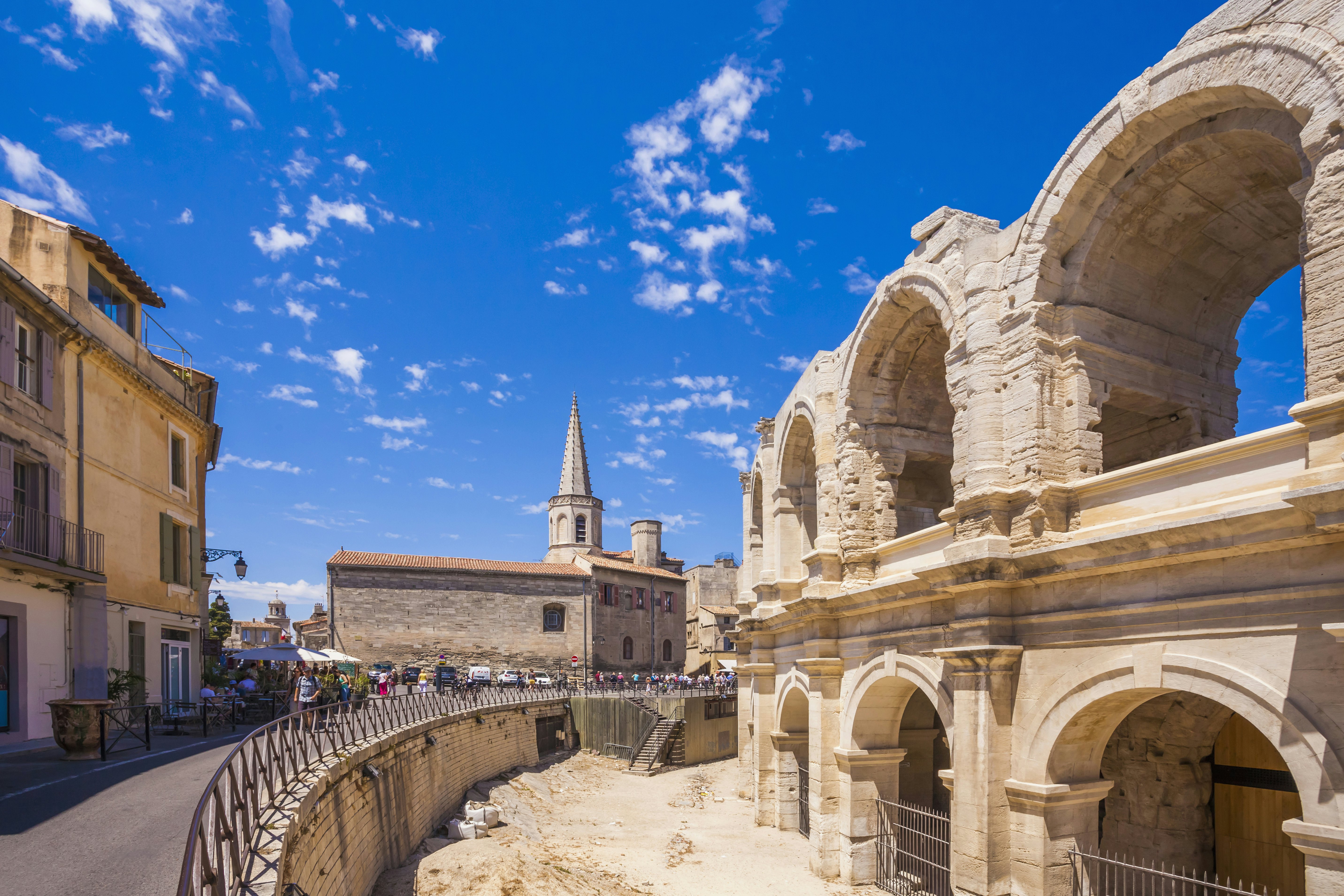
3. Admire the Roman-era Les Arènes d'Arles
In Roman Gaul, every important town had an amphitheater, where gladiators and wild animals entertained the crowds and met their (usually grisly) ends. Few have survived, but in Arles (as in nearby Nîmes), the city's colosseum is largely intact.
Built around 90 CE, this oval-shaped amphitheater stands at 136m (446ft) long, 107m (351ft) wide and 21m (68ft) tall. It would have held 21,000 baying spectators in its heyday. The structure has suffered through the centuries, but it's still highly evocative of the might and capabilities of Roman civilization.
Planning tip: As well as exploring on a daytime visit (buy tickets on arrival), major festivals and evening events are scheduled throughout the year. Check online for dates.
4. Catch a modern concert at the ancient Théâtre Antique
Just a stone’s throw from the colosseum, the Théâtre Antique is a wonder of graceful engineering, built at the behest of the unofficial first Roman Emperor, Augustus, in the 1st century BCE. Despite a semi-ruinous state brought on by centuries of pilfering, it still serves as one of Arles' premier venues, staging summertime concerts and plays where moody lighting, seating for 10,000 and a handful of remaining Roman pillars create a magical atmosphere.

5. Descend into the Cryptoportiques
The origins of these fascinating underground chambers, sitting below the current city center, go at least back to the first Roman colony in Arles in 46 BCE, and most likely extend to even older Greek caverns. It's a wonderfully literal excursion to take the stairs down through 2000 years of history from the gleaming administrative heart of modern Arles to vaulted chambers that housed shops or storage cellars under the city's Roman-era forum. As a bonus, the cool air below ground is a welcome respite in summer.
6. Wander the cloisters of St-Trophime
Named for Arles' semi-mythical first archbishop, this Romanesque-style church, built over a 5th-century basilica, was a cathedral until the bishopric moved to Aix in 1801. Built between the 12th and 15th centuries, it’s considered a masterpiece of the Provençal Romanesque style.
Look for the intricately sculpted western portal, topped by a tympanum depicting the Apocalypse (and St Trophime himself, brandishing his crozier). Inside, the treasury contains bone fragments of Arles’ bishops. Occasional exhibitions are hosted in the neighbouring cloister, Cloître St-Trophime.
Planning tip: Tickets to exhibitions in the cloister are sold at the town hall or the tourist office.
7. Dine at one of Arles' best places to eat
The Place du Forum is a great spot for cafe lounging, soaking up the atmosphere, and reflecting on the centuries' worth of Arles residents who did the same. But you'll also find an abundance of cafes and bistros with outdoor seating throughout central Arles.
For the best in Arles dining, head to Monstre, a hip gallery-style restaurant that you’ll need to reserve a table at by phone – your tastebuds will thank you. Tucked away in a quiet courtyard is the L'Épicerie du Cloître, where fusion-style tapas is paired with naturally produced wines (there’s also a grocery store here if you’re prepping for a picnic).
Other cozy options include Café de la Roquette, a laid-back spot serving food and drinks until late, and Le Gibolin, a petit bistro with a changing chalkboard menu that's also earned a Bib Gourmand.
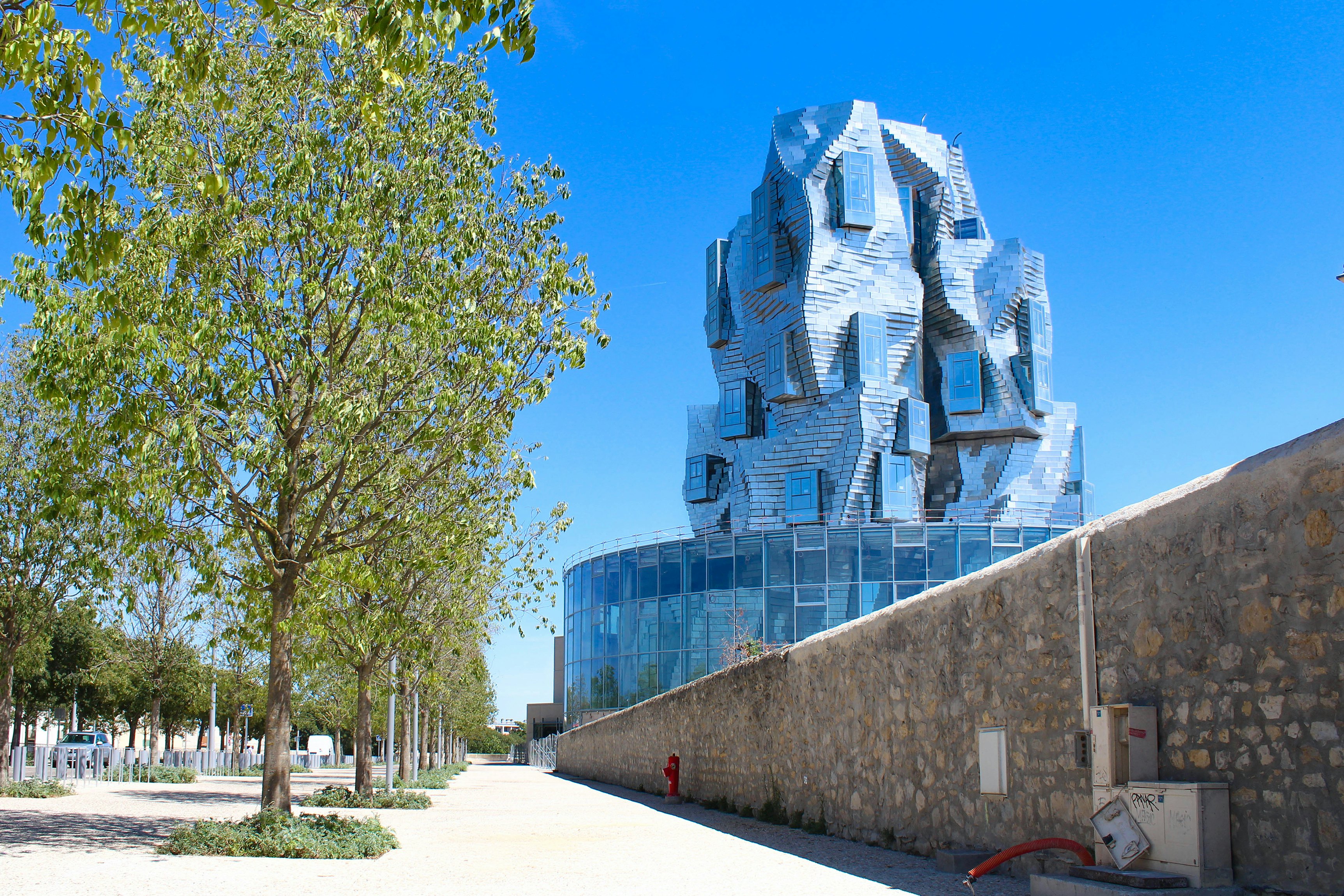
8. Spend an arty afternoon at LUMA
In 2021, Arles’ already outsized cultural landscape welcomed a new cutting-edge gallery and arts center. Rising from a defunct railway depot in the city's southeastern quarter, the LUMA Arles project was funded by the Swiss-based Luma Foundation, and it's centered on Frank Gehry's dramatic La Tour.
This modern landmark rises over the city limits, reflecting the changing light – a steel and glass contemporary art statement, and a billionaire-funded funhouse for modern creativity. Inside, studios, exhibition and performance spaces usher in a spangly new vision of the future.
Planning tip: LUMA is open from 10am to 6pm every day, except Tuesday; get here on Envia bus line 1 from the train station.
9. Uncover local history at Musée Départemental Arles Antique
This striking cobalt-blue museum perches on the edge of what used to be the Roman chariot-racing track (hippodrome), just southwest of central Arles. The collection of pagan and early Christian finds displayed here includes stunning mosaics and an entire wing devoted to treasures highlighting Arles' commercial and maritime prominence in the ancient world. The displays reach back to prehistory, through the arrival of the Greeks in 600 BCE to the Roman period and beyond.
Planning tip: From April to November 2025, the museum will be closed for renovations; check the website for updates.
10. See great modern artists at Musée Réattu
This superb, 150-year-old art museum, housed in an exquisitely renovated 15th-century Hospitaller priory by the Rhône, looks old-fashioned from the outside, but its modern art collection is truly top-notch. Among its holdings are works by 18th- and 19th-century Provençal artists, two paintings and 57 sketches by Picasso, and works from its namesake painter, Jacques Réattu. It also stages wonderfully curated cutting-edge temporary exhibitions.

11. Learn about the region's cultural history at Museon Arlaten
Arles' ethnographic museum was founded back in 1889 with the intent of documenting the culture, styles and creators of the region. The museum closed for an 11-year redevelopment from 2009 (it went on for longer than anticipated) but it reopened as a stunning exhibition space in 2021.
Today, you can explore with a multimedia app that showcases the museum's incredible collection of objects, revealing their secrets and enhancing the visitor experience as you pass through centuries worth of Arles' history.
Planning tip: On the first Sunday of every month the museum is open for free.
12. Marvel at Roman civilization at the Thermes de Constantin
These partly preserved Roman baths – listed as a UNESCO World Heritage site for their hypocaust under-floor heating system – were built for the private use of the Emperor Constantine in the 4th century. While much of the complex has been built over across the centuries, you can still see the hypocaust and several plunge pools, and get a sense of the overall elegance of the construction.
Planning tip: Visiting times vary so check the Arles Tourism website for opening hours and planned closures.

13. Sip coffee inside a van Gogh painting on the Place du Forum
Just as social, political and religious life revolved around the forum in Roman Arles, so the busy plane tree–shaded Place du Forum still buzzes with life today. You may recognise the forum from the bright yellow cafe depicted in Café Terrace at Night (1888), which lies to the side of the main square. Bistros, bars, restaurants and ice-cream stands ring the square if you're seeking refreshment.
14. See the inspiration for van Gogh's Les Alyscamps
A testament to the significance of Roman Arles, Les Alyscamps – a grand processional avenue of tombs and sarcophagi – holds more than 1500 years' worth of corpses, which Roman custom insisted were buried outside the city.
Van Gogh and Gauguin both painted this evocative necropolis, at the eastern end of which stands the marvellously atmospheric, unfinished 11th-century St-Honorat chapel. Les Alyscamps is a short way outside the walls of the old town of Arles, within walking distance of the center.

15. Book a bird-watching safari in the Camargue
If you are not already a bird lover, a trip to the Parc Ornithologique de Pont de Gau in Stes-Maries-de-la-Mer will make you one. A 40-minute drive southwest of Arles, this outstanding wetland beauty has more than 200 species in residence at different times of year.
Observing the surreal beauty of flamingos swooping overhead or flocking together on the marshlands from one of the observation shacks or a vantage point in the deep grass is one of those life-affirming moments. Flamingos are not the only species to get excited about - herons, egrets and storks also call the wetlands home, as do birds of prey such as hawks and falcons
Planning tip: To fully appreciate the majesty of this nature reserve and its inhabitants, bring binoculars or a long camera lens.
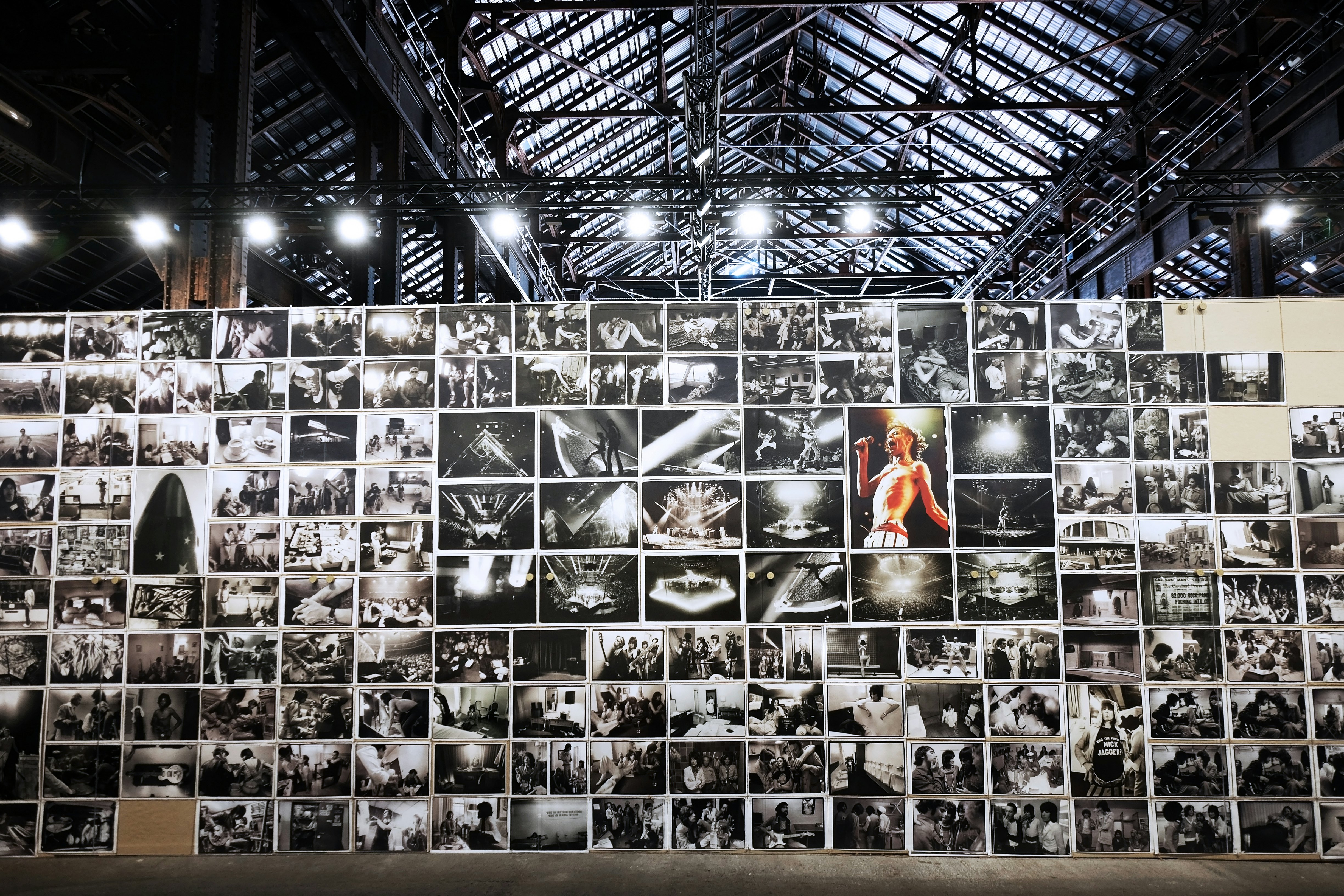
16. See the work of great photographers at the Les Rencontres d'Arles festival
Arles has long been synonymous with the arts, and its photography school, the École Nationale Supérieure de la Photographie, is easily one of the world's best. Every year, between July and September, the city welcomes Les Rencontres d'Arles – an annual photography festival that began in 1970. The festival celebrates big names you've probably heard of before, as well as lots of new talent, and it has the art world partying until dawn during the festival's big “Night of the Year” celebrations.
17. Revel in historical reenactments at the Arelate Festival
The Arelate Festival is an all-encompassing – and mostly free – celebration of the city’s prominent Roman history. Much more than just an overblown fancy dress party, it is a bold acknowledgement of Arles’ heritage and how ancient culture continues to shape the city today.
Every August, the whole of Arles is transformed, and its illustrious Roman monuments come alive with historical reenactments. The streets become a theater, as gladiators race chariots and slay it out in the arena, while learned archaeologists and historians host seminars, ancient recipes are dished out, and outdoor screenings of Roman-themed movies keep families engrossed.

18. Taste the cowboy life in the Camargue
The Camargue's gardians (mounted cow herders) have a mystique to rival the gauchos of Argentina, and it's easy to get a taste of cowboy life in the Camargue. If time is limited, head to Domaine de la Palissade (a remote nature centre, around 45km south of Arles) for a half-day horse-riding experience with well-informed guides. First-timers can enjoy a gentle trot, while experienced riders can cut loose and gallop down the hot sands.
For a proper taste of Camargue cowboy life, book yourself onto a week-long course with the Manade Salierène horse-riding school, which includes riding lessons, accommodation, and meals with the family of the manadier (herder).
Planning tip: Languages spoken at local riding schools include English, Spanish, Italian and, of course, French.

19. Day trip to one of France's most celebrated villages: Les Baux-de-Provence
Clinging precariously to an ancient limestone baou (the Provençal term for “rocky spur”) in the Alpilles mountains, this fortified hilltop village is considered one of the country’s most beautiful. It’s easy to understand its popularity – narrow cobbled, car-free streets wind past ancient houses up to a splendid ruined castle.
The clifftop castle’s dramatic, maze-like towers and dungeons date from the 10th century and are well worth exploring. The chilly galleries of the Carrières de Lumières, in a former limestone quarry to the north of the castle, are another top attraction; giant projections illuminate the walls, floor and ceiling, accompanied by an informative voice-over and swelling music.
Planning tip: Les Baux-de-Provence is only a 35-minute drive from Arles, but parking here is a challenge. Ideally, arrive by public transport, or get here very early in the day.
This article was adapted from Lonely Planet’s France guidebook, published in May 2024.







